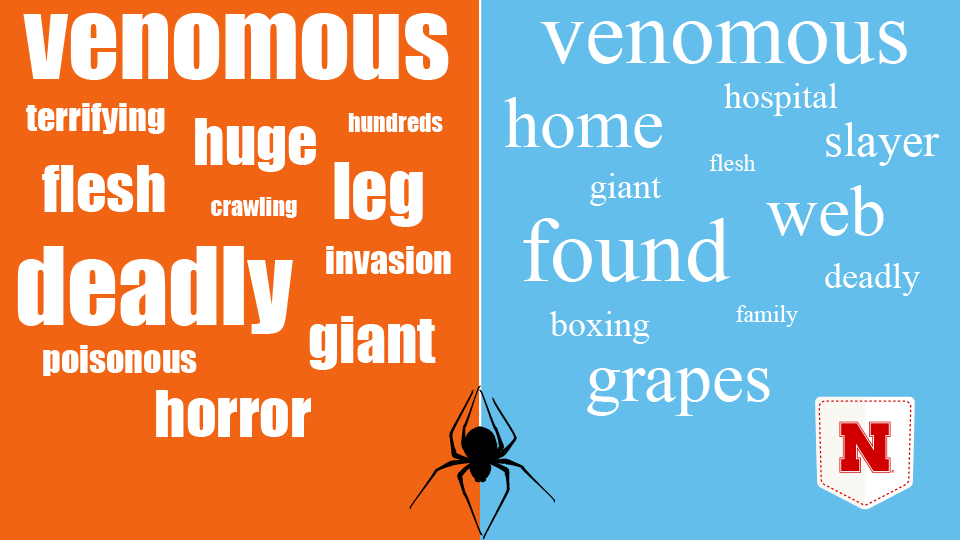
Welcome to Pocket Science: a glimpse at recent research from Husker scientists and engineers. For those who want to quickly learn the “What,” “So what” and “Now what” of Husker research.

What?
The odds of encountering a dangerous spider are far longer than its legs: Fewer than five of every 1,000 spider species pose any health threat to people, and the few that do rarely live among humans. Still, arachnophobia ranks as one of the most common animal-based fears.
But the reasons for arachnophobia — and the spider’s typecasting as nature’s villain — remain murky. Some research has pointed to socio-cultural influences, with one recent study suggesting that watching the rare example of spider-friendly media, a “Spider-Man” movie, can reduce arachnophobic behavior.
Following that thread, an international team of arachnologists wondered how the tenor and tone of spider coverage in online media might be affecting people’s perceptions of the eight-legged. Unfortunately, a scant two studies had analyzed spider-related news coverage, and those only in Australia and Italy.
So what?
Nebraska’s Laura Segura Hernández joined a 65-researcher, six-continent effort to compile a database of online articles about human-spider encounters published from 2010 through 2020. Using keyword searches of Google News, the team accumulated 5,348 articles spanning 40 languages and 81 countries.
Roughly 14 times more stories were published in 2019 than 2010. Of the total articles, 47% contained at least one error about spiders; 43% were judged as sensationalistic, often leaning into words such as “agony,” “creepy crawly” and “nightmare.” Less than 20% consulted a spider expert.
Now what?
In cataloging details of the stories — publication date, news outlet, reported spider species, type and location of event — the new database should spur questions and inform answers, the team said. Among the questions: What socio-cultural factors explain geographical disparities in coverage? Do differences in media framing correspond with spider perceptions and conservation efforts? Could coverage help track habitat ranges and expansions?
The team’s approach could also be applied to coverage of other maligned animals, including stinging insects, snakes and jellyfish.







